Picture tutorial: Show preparation for soft feather poultry
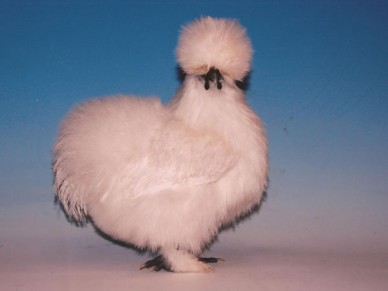
In this photo tutorial we show you how to prepare a soft feather bird for showing. You can apply the same methods to all birds, the only difference for a breed such as silkies (as shown in the pictures) who’s barbless feathers soak up water like cotton wool, is that drying time may be slightly longer.
First things first, you need to check your birds over to make sure that they are in good general health and that they are free of feather lice, mites or parasites as it would be very bad protocol to take an infested bird to a show. Check along the wing feathers and around the vent where lice eggs can appear as small ‘cocoons’.
You also need to check that all feather groups are present and correct as it would be pointless preparing a bird who stands no chance of a place due to incomplete plumage.
It is important to wash your birds in a warm environment as if they get cold whilst wet they can become ill very quickly. However, if you get the conditions right you might be surprised at just how much your birds enjoy a warm bath and blow-dry. The one shown in the pictures was so relaxed she was practically asleep for the majority of the process.
What will you need?
Jug, suitable shampoo (we suggest tea tree oil dog shampoo), baby shampoo (for crested birds), soft nail brush, soft toothbrush, cotton buds.You can use baby shampoo for the whole body but widely available tea tree oil dog shampoo adds shine and can help kill and discourage mites into the bargain.
Scrubbing up
Fill your sink or a suitable bowl with lukewarm (not hot) water deep enough to immerse at least the bottom third of your bird. Leaving the head, gently wet the feathers.

Premix a small amount of shampoo in jug of water and pour over the back of the bird – this allows it to start lathering more easily. Run the shampoo through the feathers in the direction of growth.

Gently rub the shampoo into all areas of the bird’s body and then tease the feathers between thumb and forefingers to clean thoroughly. For matted or very stained areas you can add more shampoo and use a soft nailbrush to gently clean and tease the feathers out.

Work along all feathers and into areas under the wings and tail and then rinse off.
You should only need to clean the head if you have crested birds such as the silkie in the photos. You should only use a small amount of mild baby shampoo where necessary as prolonged use of more astringent chemicals can damage your bird’s eyes. Even using baby shampoo you should avoid contact with the eyes as much as possible.
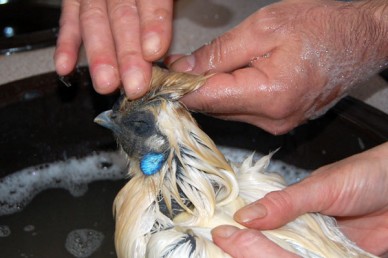
Wet the head and very gently clean the feathers in the same manner as the body. If necessary comb and wattles can be cleaned, very gently, with your finger or a cotton wool bud, do not use a brush on these delicate parts.
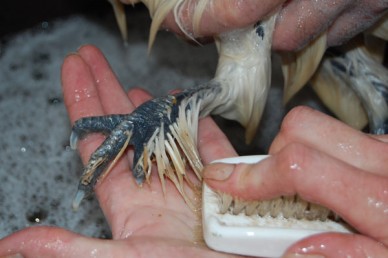
Feet can be cleaned with a soft nail brush or an old toothbrush but do not scrub and remember to move only across the scales not against the direction of growth.

When finished place a towel underneath and then wrap it over the bird and leave somewhere warm for 10 minutes for the excess moisture to soak away into the towel.
If you have a warm, safe environment in which the birds can dry naturally then this is fine but if you need them to dry quicker then you can speed along the process with a hairdryer.
It is very important that you use only a warm, not hot, heat setting and position the dryer a good distance away to avoid burning – if it feels hot on your bare arm then it is too hot for your bird.

Angle the dryer so that the the air gently lifts the feathers allowing them to dry more easily – keep moving the drier in a circular motion, again to avoid burning. For a final fluff you can select a cool setting and get in closer to dry under the feathers and, in the case of the silkie, achieve a puffed-up effect.
Finishing touches
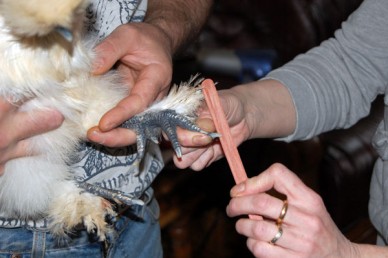
When your bird is dry you can move to the finishing touches. Using nail clippers and a fine emery board, not a coarse metal file, you can cut smooth down any unsightly or burred toenails. You can also file the tip of the beak gently if there is any roughness or sharpness there.
To finish off apply a thin layer of unperfumed hand cream or a tiny dab of Vaseline to the feet to soften them and help lift any dead scales. If required you can also apply to the comb and wattles.
Your chicken will be happy putting the final touched to their plumage themselves but you should NEVER put your birds away wet, especially if it is cold or the temperature is likely to drop before they are fully dry.
This process can be repeated weekly if necessary for up to three weeks before a show by which time your bird should be looking as good as the champion at the top of the page.
Alan and Karen Cooper have shown and bred Silkies for six years.
Poultry categories
Most recent Poultry articles
- Preventing egg laying problems in older hens with implants 15th March, 2017
- Integrating new chickens into an existing flock 15th May, 2016
- The nests in my heart – a personal view of ex-battery hens 22nd March, 2016
- Chicken FAQ: your most common chicken keeping questions answered 19th January, 2016
- Hens and herbs – no this is not a chicken recipe 08th October, 2015
- Feeding chickens: a balanced diet for backyard hens 16th April, 2015


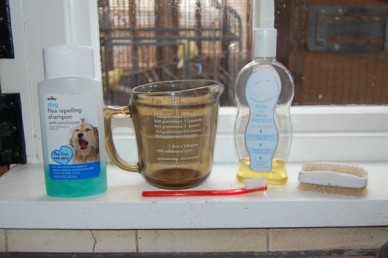

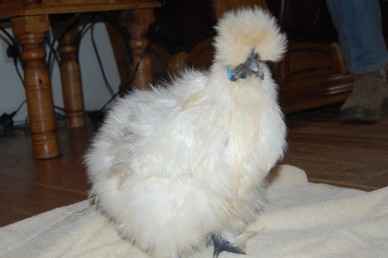





Leave a reply